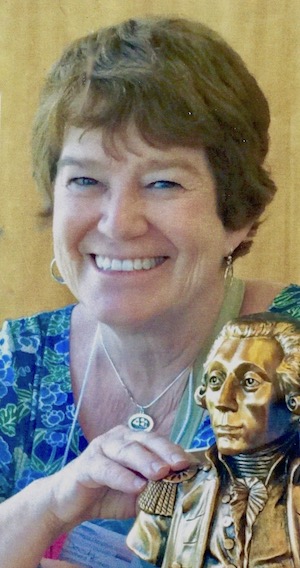A few wonderful e-mails from teachers and school librarians that recently arrived in my inbox:
"Our 4th grade students read The Riddle of Penncroft Farm every year. The 4th grade teachers asked me to check in and see if you would be willing to skype with the class after they read it this year. Let me know your thoughts!" Jennifer Winstead, Germantown, TN
Of course, I was delighted to do that! After that fun experience, I decided to look around the internet and see who else was using Riddle in the classroom and letting them know I like to do e-visits to classrooms. I also keep getting "spontaneous" e-mails straight from students, who then tell their teachers we have been in contact, and then the teachers write me directly. Between my googling and spontaneous e-mails from students, teachers and librarians, I have now done four classroom e-visits, with more scheduled. As you can see by the picture below, I really enjoy talking to these kids!
'LOVE YOUR BOOK! I just wanted to let you know that in my district our 4th grade gifted students read your book every year. As a result, I have read "The Riddle of Penncroft Farm" eighteen times and it never gets old. Every single student I've ever taught has also loved it, and learned so much while reading it! The story is so interesting and well crafted. I appreciate, and the students definitely notice, all of complex wordplay throughout the story and the story itself touches me every time - I always get choked up when reading about Aunt Cass's death. THANK YOU for creating such an amazing story!!! Sue Saddlemire, Newtown, PA
* * *
"[The Riddle of Penncroft Farm] is a tie into one of our units
on conflict and the Revolutionary War.. .all three 5th grade teachers
at my school are reading it as a read aloud right now. . . I still
consider it one of my favorites! I love all the connections students
have to make as we read." - Holly Schlagel, Ft. Collins, CO
* * *
"I am a 5th grade teacher . . .and have been reading and teaching your novel, The Riddle of Penncroft Farm, for the past 15 years! Every year I can't wait for my students get to know Lars, Geordie, Will, and of course Sandy! After 15 years, you'd think I would get bored teaching this novel, but during every single read, I learn something new!. . .We even take an annual trip to the City Tavern for a lovely brunch. . .my colleague and I love to see the kids enter this historic building." Sara Shaiman, Havertown, PA
* * *
* * *
"Hello, Ms. Jensen. I have been reading your novel with my 4th graders for several years. It is a wonderful story and a great history lesson. " -Elise Weinstein, Newtown, PA
* * *








